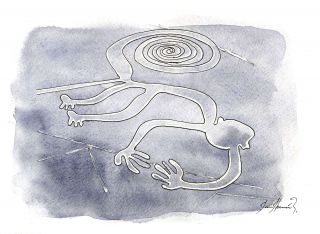

What are the origins and meaning of the Nasca's lines?
South of Lima, on the coast, the region of the city of Nazca is characterized by a sandy desert that stretches for thousands of kilometers. And as you walk away from the city, entering the desert, you discover a spectacle of impressive geoglyphs, drawings, figures drawn on the ground. On the dunes of this desert, traces of the Nazca civilization, a pre-Incan culture dating from 300 to 800 years before our era, can be seen on the gray ground. Shapes of birds, monkeys, hummingbirds, condors, or geometric shapes such as spirals or broken lines, are up to 270m long, and seem to represent the deities of this ancient civilization. The incredible preservation of these patterns is due to the strong drought (which prevents plant growth) and the absence of wind, due to the very hot air that reigns in this desert. There are several theories about the meaning of these strange drawings. One of the most popular is that of the German mathematician Maria Reich, who dedicated her life's work to the study of these traces in the ground. According to her, it would be a huge astronomical calendar, whose main lines would give the direction of stars or major constellations.
This theory was then refuted and replaced or augmented by other research: ritual site, a way to find water sources, a sound amplifier to predict earthquakes, or for the most eccentric, an airstrip for aliens ... Experts can not agree on the origin and use of these strange forms. The UNESCO classified this site as World Heritage of Humanity in 1994; and one can admire these formidable remnants of the past by flying over them from small planes which make shuttles for the tourists...



